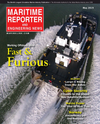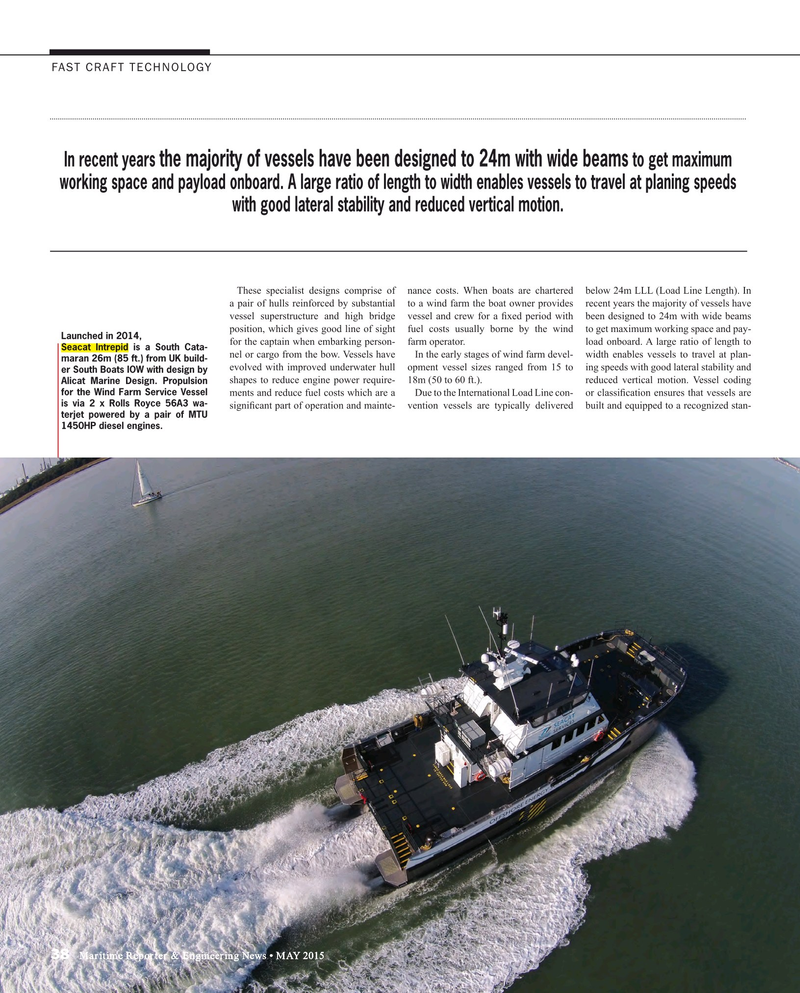
Page 38: of Maritime Reporter Magazine (May 2015)
The Marine Propulsion Edition
Read this page in Pdf, Flash or Html5 edition of May 2015 Maritime Reporter Magazine
FAST CRAFT TECHNOLOGY
In recent years to get maximum the majority of vessels have been designed to 24m with wide beams working space and payload onboard. A large ratio of length to width enables vessels to travel at planing speeds with good lateral stability and reduced vertical motion.
These specialist designs comprise of nance costs. When boats are chartered below 24m LLL (Load Line Length). In a pair of hulls reinforced by substantial to a wind farm the boat owner provides recent years the majority of vessels have vessel superstructure and high bridge vessel and crew for a ? xed period with been designed to 24m with wide beams position, which gives good line of sight fuel costs usually borne by the wind to get maximum working space and pay-
Launched in 2014, for the captain when embarking person- farm operator. load onboard. A large ratio of length to
Seacat Intrepid is a South Cata- nel or cargo from the bow. Vessels have In the early stages of wind farm devel- width enables vessels to travel at plan- maran 26m (85 ft.) from UK build- evolved with improved underwater hull opment vessel sizes ranged from 15 to ing speeds with good lateral stability and er South Boats IOW with design by shapes to reduce engine power require- 18m (50 to 60 ft.). reduced vertical motion. Vessel coding
Alicat Marine Design. Propulsion for the Wind Farm Service Vessel ments and reduce fuel costs which are a Due to the International Load Line con- or classi? cation ensures that vessels are is via 2 x Rolls Royce 56A3 wa- signi? cant part of operation and mainte- vention vessels are typically delivered built and equipped to a recognized stan- terjet powered by a pair of MTU 1450HP diesel engines.
38 Maritime Reporter & Engineering News • MAY 2015
MR #5 (34-41).indd 38 MR #5 (34-41).indd 38 5/1/2015 3:10:22 PM5/1/2015 3:10:22 PM

 37
37

 39
39
